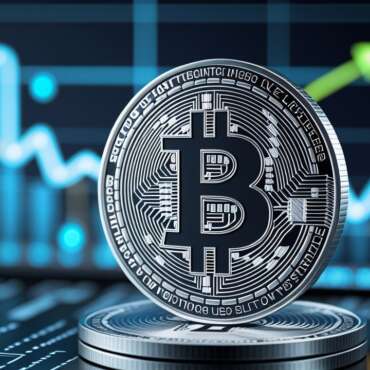Defining ‘Real Flash USDT’: Concept vs. Reality
In the rapidly evolving world of cryptocurrency, the term real flash USDT has gained traction among traders and investors. But what exactly does it mean? Is it a legitimate financial instrument, or is it shrouded in misconceptions? This comprehensive guide dives deep into the concept of real flash USDT, examining its theoretical foundations, practical applications, and the stark differences between its idealized form and the reality of its use in today’s crypto markets.
What Is Real Flash USDT?
Real flash USDT refers to the instantaneous or near-instantaneous transfer of Tether (USDT), a popular stablecoin pegged to the US dollar, with minimal latency and maximum reliability. The term “flash” implies speed, suggesting transactions that settle in seconds rather than minutes or hours. However, the reality of achieving such seamless transfers depends on multiple factors, including blockchain congestion, exchange policies, and network fees.
Many traders seek real flash USDT for arbitrage opportunities, where price discrepancies across exchanges can be exploited for profit. The faster the transfer, the higher the chances of capitalizing on these fleeting opportunities. But does this concept hold up in practice? Let’s explore further.
The Theoretical Promise of Flash USDT
In an ideal scenario, real flash USDT would function like digital cash—immediate, irreversible, and universally accepted. Theoretically, this would enable:
- Instant cross-exchange arbitrage: Quickly moving USDT between platforms to exploit price differences.
- Seamless trading execution: Reducing slippage in high-frequency trading.
- Emergency liquidity access: Providing immediate funds during market volatility.
However, the reality is more complex due to blockchain limitations and intermediary controls.
Challenges in Achieving Real Flash USDT
Despite the demand for real flash USDT, several obstacles prevent it from being universally attainable:
- Blockchain Network Congestion: High traffic on networks like Ethereum (where USDT is commonly issued) can delay transactions.
- Exchange Processing Times: Even if the blockchain is fast, exchanges often impose withdrawal/deposit delays for security reasons.
- Transaction Fees: Gas fees on Ethereum can spike, making rapid transfers expensive.
- Regulatory and Compliance Checks: Some platforms require additional verification before processing large USDT movements.
Real Flash USDT in Practice: How Close Are We?
While true real flash USDT remains elusive in most cases, certain solutions and workarounds have emerged to approximate its benefits:
Layer-2 Solutions and Alternative Blockchains
To mitigate Ethereum’s scalability issues, many projects now offer USDT on faster, cheaper networks, such as:
- TRON (TRC-20): Known for low fees and fast confirmations.
- Binance Smart Chain (BEP-20): Another high-speed alternative.
- Polygon (MATIC): A Layer-2 solution reducing Ethereum’s congestion.
These networks enable quicker USDT transfers, though they still depend on exchange support.
Centralized Exchange Internal Transfers
Some platforms, like Binance or OKX, allow instant USDT transfers between their users without on-chain transactions. While not true real flash USDT, this method provides near-instant liquidity for traders on the same exchange.
Misconceptions and Scams Surrounding Real Flash USDT
The hype around real flash USDT has also led to fraudulent schemes. Common scams include:
- “Flash Transfer” Services: Fraudsters promise instant USDT transfers for a fee but disappear after payment.
- Fake Arbitrage Bots: Tools claiming to exploit flash USDT opportunities, often stealing deposited funds.
- Phishing Platforms: Fake exchanges offering “instant USDT” to harvest login credentials.
Always verify the legitimacy of services claiming to provide real flash USDT.
How to Safely Utilize Fast USDT Transfers
For those seeking efficient USDT transactions, follow these best practices:
- Choose the Right Network: Opt for TRC-20 or BEP-20 when speed is critical.
- Use Reputable Exchanges: Stick to well-known platforms with strong liquidity.
- Monitor Gas Fees: Tools like Etherscan can help time transactions for lower costs.
- Enable Whitelisting: Secure your withdrawals by pre-authorizing trusted addresses.
The Future of Real Flash USDT
Advancements in blockchain technology could make real flash USDT more attainable. Innovations like:
- Ethereum 2.0: Promises faster and cheaper transactions.
- Cross-Chain Bridges: Improving interoperability between networks.
- Central Bank Digital Currencies (CBDCs): Could inspire more efficient stablecoin designs.
As these developments unfold, the gap between the concept and reality of real flash USDT may narrow.
Conclusion: Bridging the Concept and Reality of Real Flash USDT
While the idea of real flash USDT is compelling—offering instant, frictionless transactions—today’s crypto infrastructure still presents hurdles. By understanding the limitations, leveraging faster networks, and avoiding scams, traders can approximate the benefits of flash transfers. As blockchain technology evolves, the dream of true real flash USDT may soon become a widespread reality.
For more insights on USDT and crypto trading strategies, explore buyflashusdt.store—your trusted resource for secure and informed digital asset management.



